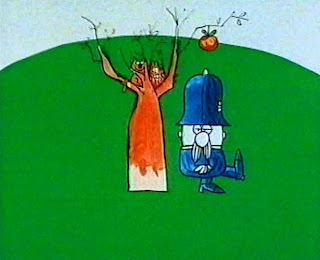A little over a year ago I
posted about Save UK Animation, a group campaigning for tax breaks on the British animation industry. Since then I've heard very little about the organisation, but I'm pleased to see that it has been joined by a similar group, focusing instead on independent animation, called
Animation Alliance UK. Its member list is a veritable who's who, containing names such as Phil
Mulloy, Caroline Leaf, Clare
Kitson, Jonathan
Hodgson, Jayne
Pilling,
Marjut Rimminen and many others.
A press release from the group has been posted on
Cartoon Brew:
Animation Alliance UK has today written to Lord Chris Smith, Panel chair of the independent review of Government film policy, to raise its concerns about the lack of public policy, strategy and support for independent animation.
The Alliance makes a “straightforward plea” for an acknowledgement of the importance of cultural animation production to the UK, and a recommendation that steps are taken to ensure its continued success.
Animation Alliance UK has a focus on independent animation as cultural cinema and art form. Its membership includes Oscar and BAFTA winners and nominees, and reflects the range of animation practice, across many areas of creative, cultural and commercial activity in the arts and creative industries.
British animated short film has enjoyed amazing success, with British animators winning the Oscar for animated short film eight times, with a further 20 nominations, in the last 25 years.
The letter notes that as support from broadcasters and public funding bodies has diminished, so UK animators are finding financial support from, and relocating to, other countries. It states that the UK Film Council and Arts Council England have failed to work together to provide any strategic leadership:
“Independent animation is a vital part of the UK’s culture and its creative industries. The sums of money that are required to underpin a vibrant independent animation sector are relatively small. But the development of independent animation and the nurturing of its talent base is dependent on its own drive and determination, and this is unsustainable.”
The group's website contains the full text of the letter to Lord Smith. "The UK achieved international renown as a prolific centre of excellent for animated short film came about because of a uniquely British model of sustained public support from public service broadcasters, and public film and arts funding bodies, that allowed creative production free from commercial constraint", it says in one section. "That support has all but evaporated. Ten years ago, both the BBC Animation Unit in Bristol and S4C’s animation unit were closed. In 2005, in addition to its single film commissions, Channel 4 was supporting around 15 short films a year through its innovative open call schemes, in partnerships with BFI, Arts Council England and the National Media Museum. All now gone." The letter's conclusion is as follows:
What is needed
Independent animation seems to languish in a chasm between the responsibilities and remit of Arts Council England and UK Film Council/BFI.
Independent animation is a vital part of the UK’s culture and its creative industries. The sums of money that are required to underpin a vibrant independent animation sector are relatively small. Modest investment in the past has delivered incredible value for money in terms of job creation, financial leverage, and the impact on other sub-sectors of the knowledge economy. This can be done with relatively small amounts of money, yet the cultural returns on any investment would be enormous.
To reverse this process of decline we believe that as a first step it is vitally important that the BFI and Arts Council England recognise the role that the independent animation sector plays in British culture.
We would urge your Panel to give due consideration to our concerns, and to raise them with those agencies.
All this is good to see, but I think there's also an area which the academic side of the animation community should be engaging with: namely, what is independent animation in this day and age? The Internet has changed the landscape completely - in the past we had to rely on Channel 4 airings and festivals to see independent animated shorts, but now we can watch them on YouTube. Unfortunately, the Internet also brought with it a culture in which something like this can find over three million viewers. Clearly, there's a gap between the high standards of the old era and the vast potential of the new generation that needs bridging, and doing so could help campaigns such as this no end.
 Based on an Eskimo folktale retold in A Kayak of Ghosts by Lawrence Millman, Jayne Bevitt's 1991 short Blubber Boy tells the story of an Eskimo woman who carves a chunk of blubber into a replica of her drowned boyfriend, which she then brings to life by rubbing against her genitals. Unfortunately, the blubber boy tends to melt in hot conditions, and the woman eventually has to carve him afresh from a new chunk of blubber.
Based on an Eskimo folktale retold in A Kayak of Ghosts by Lawrence Millman, Jayne Bevitt's 1991 short Blubber Boy tells the story of an Eskimo woman who carves a chunk of blubber into a replica of her drowned boyfriend, which she then brings to life by rubbing against her genitals. Unfortunately, the blubber boy tends to melt in hot conditions, and the woman eventually has to carve him afresh from a new chunk of blubber.















































 The Clothes Moth
The Clothes Moth

